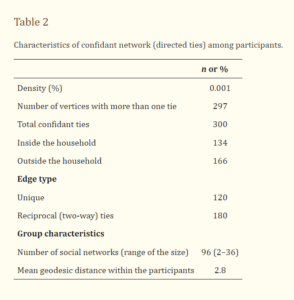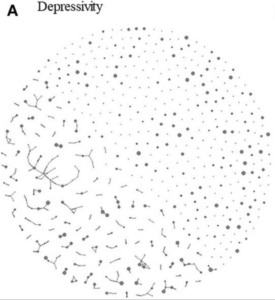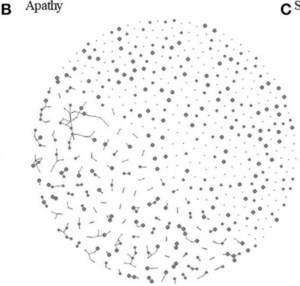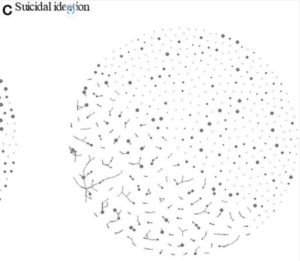Introduction
In class, we learned about homophily, which is the tendency for individuals showing the same characteristic to form connections amongst one another. I thought this was interesting and wanted to take a further look at it. I came across this interesting paper on depressive symptom homophily amongst older adults and I felt that this was worth talking about.
Data Collection
A survey was sent to 4902 participants 65 and older receiving health insurance benefits or medical care and living in Wakuya City, Japan. 660 responses were received.
Variables like were taken note of, such as the age, sex, number of household member the participant has. Participants were also asked to list the people they felt comfortable confiding to.
Participants then filled out 3 scales.
- 15 item Geriatric Depression Scale which measures the amount of depression symptoms displayed.
- 3 item apathy scale which measures apathy (lack of emotion/feeling).
- 5 item suicidal ideation scale.
Analysis
From the confidant social network resulting from the data provided, the following results were drawn.

The following visualizations were also created. The size of the nodes corresponded to the scores on the tests. Bigger nodes meant that more questions were answered yes on the respective tests. A tie existed between two nodes if a confidant relation existed between the two people that the nodes represented.



For the depression symptom test, 68% of the scores fell within a 5-point difference and 9% displayed the same scores. For the apathy and suicidal ideation tests, 36.1% and 31% of the scores were matched respectively.
According to the results homophily was found in depressive and apathy symptoms, but not in suicidal ideation. Findings showed that a one-point increase in the difference in number of depressive symptoms resulted in a 5% less chance of a confidant tie between two older adults living in the same community. A one-point decrease in the difference in number of apathy symptoms resulted in a 23% greater chance of a confidant tie between two older adults. There was no relationship found on the impact suicidal ideation had on confidant ties.
Conclusion
A conclusion can be made in this particular study that there is evidence of homophily linked to depression in older adult living in this particular region. Which raises the following questions.
- Can this be seen in younger adults and teens?
- Are these findings only present in this specific city, or can this be seen in other places around the world too?
References
- Morita, A., Takahashi, Y., Takahashi, K., & Fujiwara, T. (2022). Depressive symptoms homophily among community-dwelling older adults in japan: A social networks analysis. Frontiers in Public Health, 10, 965026. https://doi.org/10.3389/fpubh.2022.965026